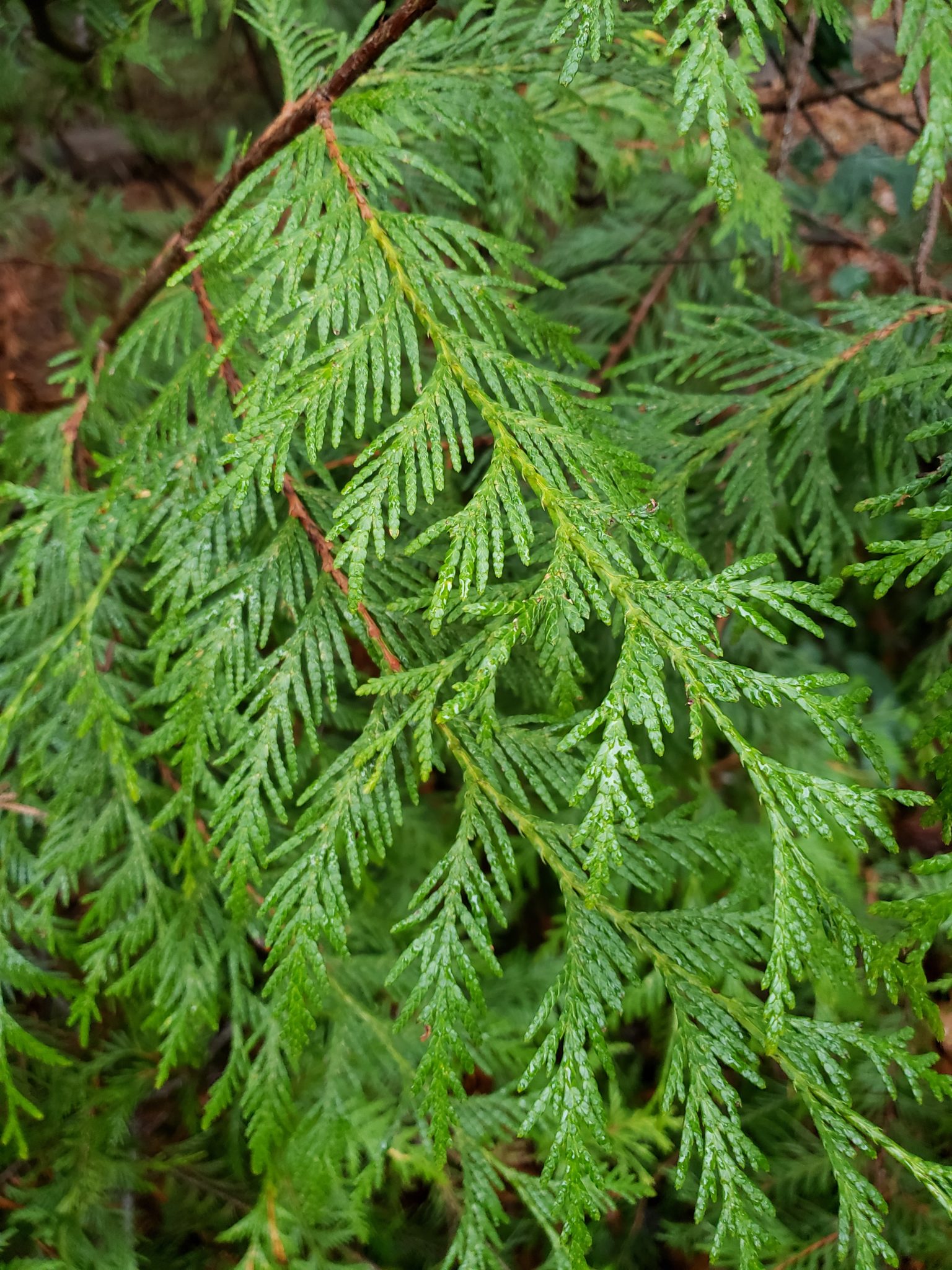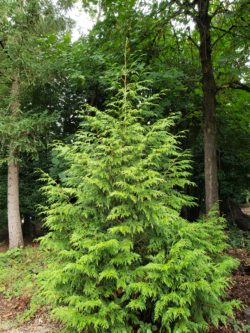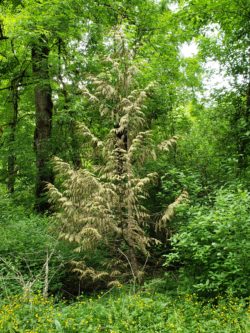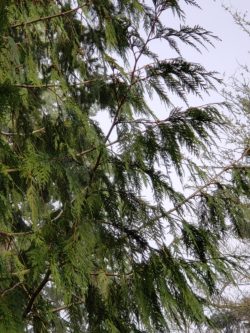
Western Red Cedar Stress
Western red cedars are one of our favorite native trees of Oregon and they seem to be in trouble. Western red cedars have been showing signs of stress in pockets throughout the Willamette Valley and across the Pacific Northwest in recent years. The alarming decline of these important trees is being investigated by officials. Although the cause has not been definitively confirmed, climate change is suspected.

Importance of Western Red Cedars
The western red cedar is a beautiful conifer with swooping branches and flat sprays of needles. It is a pillar of our local forest ecosystem as well as our local history. It grows in the cool shade of taller overstory trees like Douglas fir in mixed conifer forests. The western red cedar can grow along streams and rivers, making them an important species for riparian ecosystem health.

Signs of Decline
We usually recommend the planting of natives for their low maintenance, close relationships with local pollinators, and water conservation. As a native tree, western red cedars are uniquely adapted to our wet winters, dry summers, and mild temperatures, so the signs of widespread western red cedar stress and death are indicative of a change.
Yellowing needles (seen above), dying tops, heavy cone crops, thinning canopy, branch dieback and tree death are all signs that these beautiful trees are in decline. Pockets of declining western red cedar trees have been observed throughout the Pacific Northwest. Officials do not know why these trees are declining, but are studying the development closely. Officials are defining the distribution and extent of trees affected and monitoring pockets of declining western red cedar. They are defining the growing conditions of the sites as well as searching for diseases and pests that might explain the decline.

Preliminary Conclusions
The widespread western red cedar decline was first noticed in recent years. Since then, the study of pockets of declining western red cedar has revealed that there is not a new pest or new disease that would explain the decline. At this point, climate change is the most likely cause. Drier and hotter weather has stressed many of these trees to the point of decline.
If you are lucky enough to have one of these beautiful trees growing in your Portland-area yard, you can defend your western red cedar against this decline by protecting it from drought and sun exposure. Because these beautiful trees are shade-tolerant and prefer moist soils, eliminate drought and heat stress by supplemental watering in the summer, removing competing vegetation around the tree, and avoid removing any shading overstory trees. If a shading tree must be removed, do so during the rainy season so that the sudden sun exposure does not damage the needles of the western red cedar and plan to plant another shading tree in its place. And as always, when possible, avoid root zone disturbance including grade changes, soil compaction, and digging that may sever roots.
The investigation into the confirmed cause of the western red cedar decline continues, but we hope that this vital tree remains an integral part of our local ecosystem well into the future.


